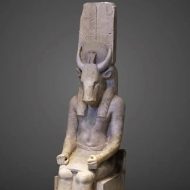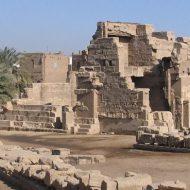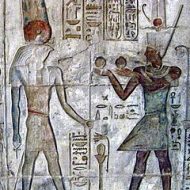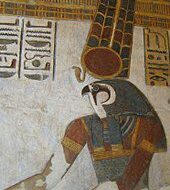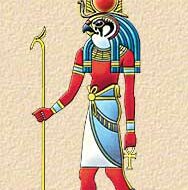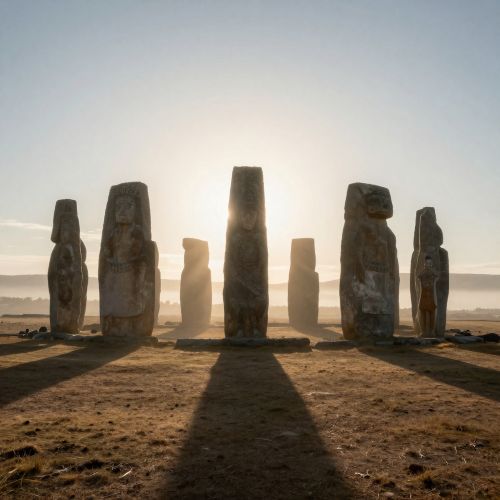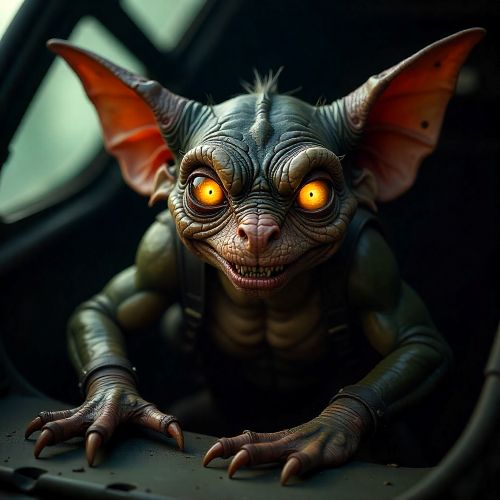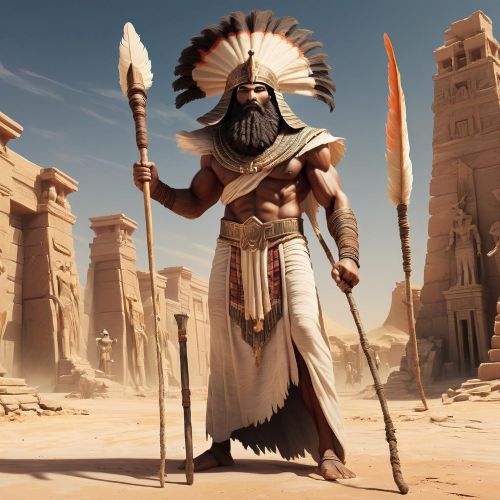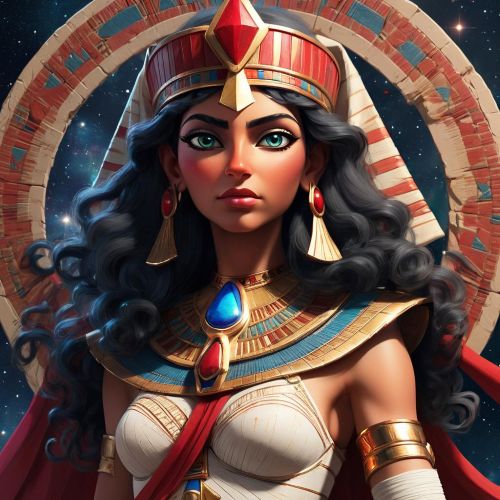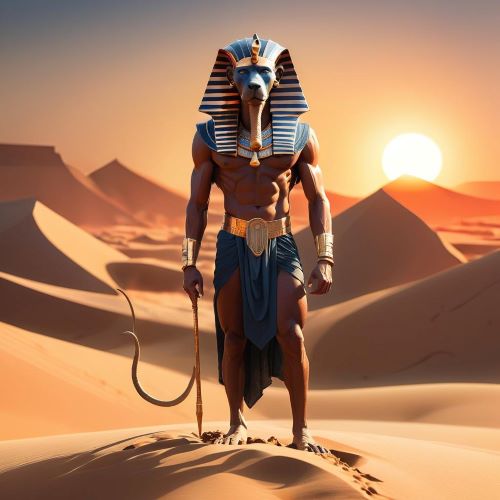Montu : The Warrior God
Listen
At a glance
| Description | |
|---|---|
| Origin | Egyptian Mythology |
| Classification | Gods |
| Family Members | Tjenenyet, Iunit, Raet-Tawy (Wives) |
| Region | Egypt |
| Associated With | War |
Montu
Introduction
In ancient Egyptian religion, Montu was regarded as the god of the fourth Upper Egyptian province, which was present-day Armant. During the 11th dynasty, Thebes took over the province and replaced its original capital, Hermonthis. He was also known as a god of war and had a bull as his sacred animal. During the 30th dynasty, this animal was given an elaborate cult. Montu was depicted as a falcon-headed creature with a double uraeus on his forehead. He had several temple complexes in Thebes, Al-d, Hermonthis, and Theban.
Physical Traits
In Egyptian art, he was often depicted as a man with a head of a falcon, and he was also sometimes depicted as a lion or a bull. Due to the link between Ra and Montu, he was often depicted with a bull or falcon head, with a solar disk crown on top.
Although he had two feathers on his head, he was also known to have a curved sword, a bow and arrows, and various other weapons during his time. Both the bull and the falcon represented his connection to Ra. The former symbolized war and strength, while the latter symbolized the sky. The Egyptians also believed that Montu could manifest as a white bull with a black snout they named Bakha.
Family
The origins of Montu are unclear due to the varying accounts that have been presented. Some believe that he was the child of Ra, who was the sun god. Others think that he was the offspring of Neith, who was a warlike goddess. Still other myths say that he was self-created or born from the primordial waters of Nun. He was originally considered a part, or extension of, the sun god Ra. At times he is linked with Hor. Montu had several consorts, including Tjenenyet and Iunit (Theban goddesses), and a female form of Ra, Raet-Tawy.
Other names
The hieroglyphs showing the name of Montu indicate that it has been transcribed as mntw, which literally means “Nomad.” Due to the difficulty in writing Egyptian vowels, the term “Montu,” “Monthu,” “Ment,” and “Menthu” are commonly recognized as its variants.
Powers and Abilities
In addition to being a god of war, Montu was also known for having various symbols and powers related to his domain of vitality and war. He was said to represent the conquering power of the pharaoh, and he was believed to have been the protector of his army and the pharaoh’s courage. Montu was also a god of hunting and archery, who used his falcon eyesight and his bow and arrows to hunt down his prey. He was also a god of thunder and storms, who used his lightning bolts to strike down his foes.
Modern Day Influence
Montu is one of the playable gods in the video game Smite, where he is a warrior who uses his falcon and bull abilities to damage and control enemies. Montu is also a character in the video game Assassin’s Creed Origins, where he is depicted as a falcon god who can be summoned by the protagonist Bayek to scout and attack enemies. Montu is the name of a roller coaster at Busch Gardens Tampa Bay, which features seven inversions and a top speed of 60 mph. The ride is themed after ancient Egypt and Montu’s role as a war god..
Related Images
Frequently Asked Questions
What is lorem Ipsum?
I am text block. Click edit button to change this text. Lorem ipsum dolor sit amet, consectetur adipiscing elit. Ut elit tellus, luctus nec ullamcorper mattis, pulvinar dapibus leo.
What is lorem Ipsum?
I am text block. Click edit button to change this text. Lorem ipsum dolor sit amet, consectetur adipiscing elit. Ut elit tellus, luctus nec ullamcorper mattis, pulvinar dapibus leo.
What is lorem Ipsum?
I am text block. Click edit button to change this text. Lorem ipsum dolor sit amet, consectetur adipiscing elit. Ut elit tellus, luctus nec ullamcorper mattis, pulvinar dapibus leo.
What is lorem Ipsum?
I am text block. Click edit button to change this text. Lorem ipsum dolor sit amet, consectetur adipiscing elit. Ut elit tellus, luctus nec ullamcorper mattis, pulvinar dapibus leo.
What is lorem Ipsum?
I am text block. Click edit button to change this text. Lorem ipsum dolor sit amet, consectetur adipiscing elit. Ut elit tellus, luctus nec ullamcorper mattis, pulvinar dapibus leo.


